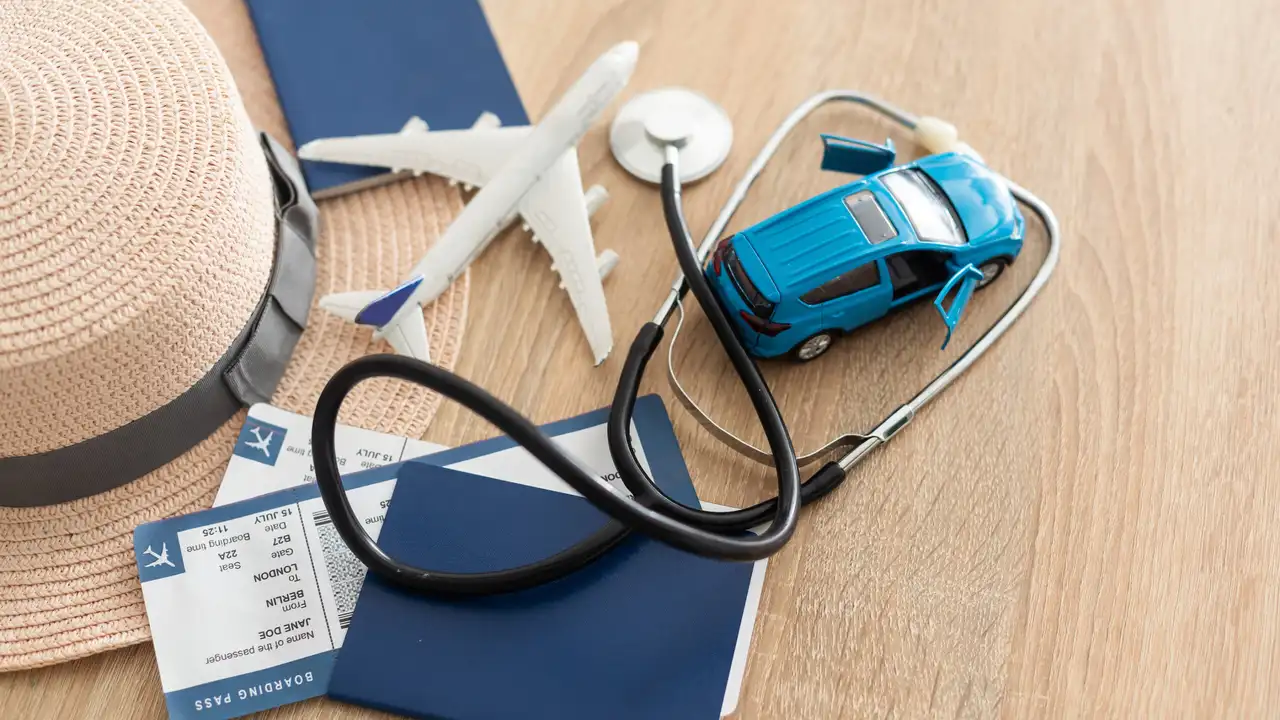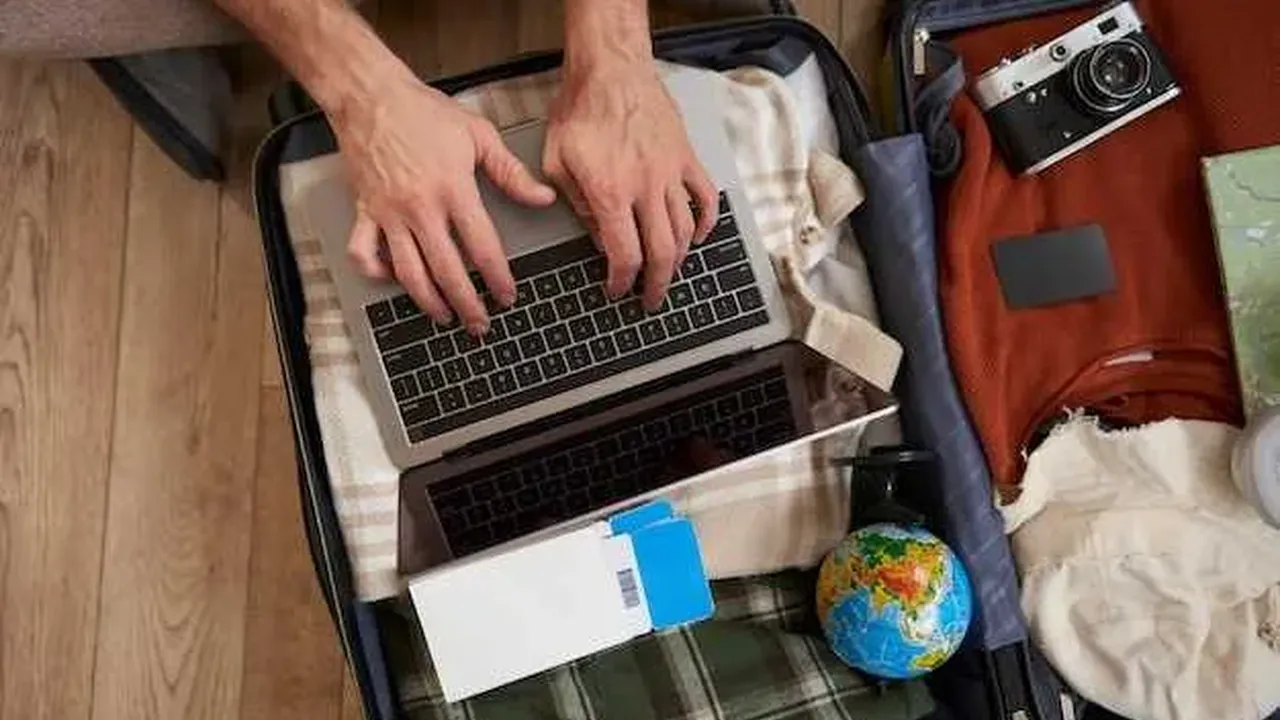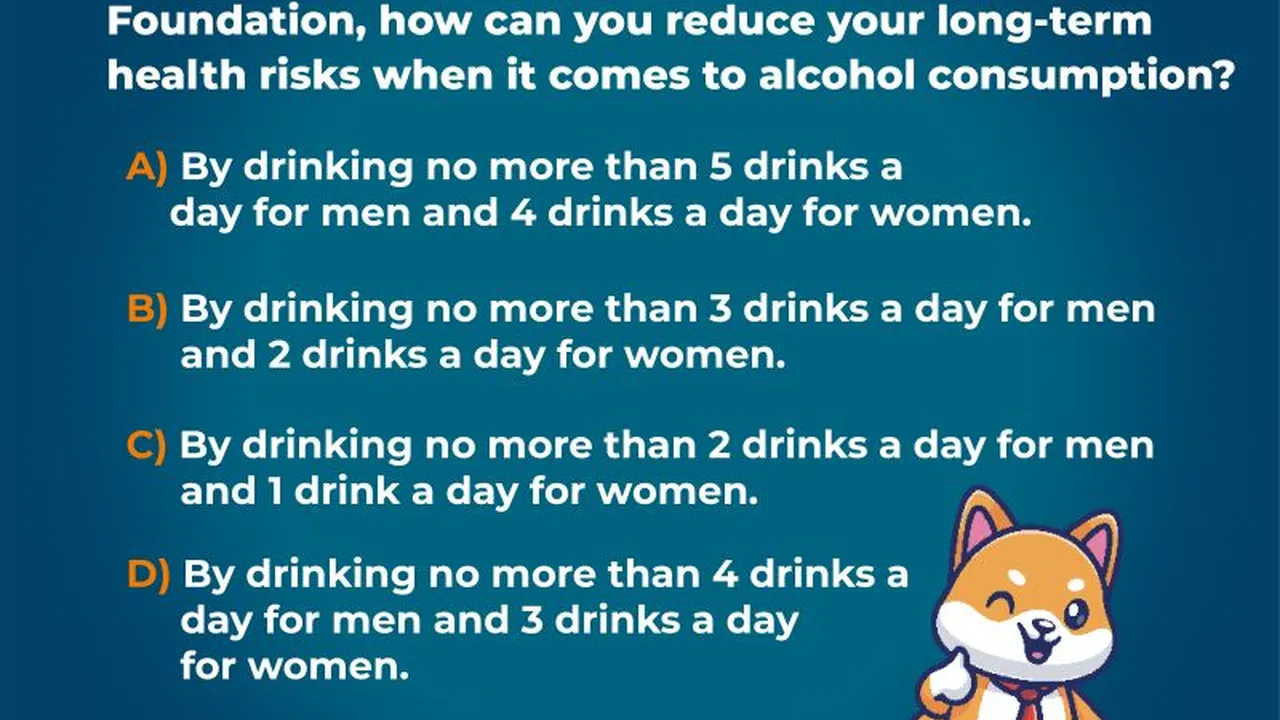Emergency Medical Evacuation: A Critical Travel Insurance Benefit

Understanding Emergency Medical Evacuation What It Is and Why You Need It
Okay, so you're planning your dream vacation, backpacking adventure, or maybe even a much-needed business trip. Exciting, right? But have you thought about what happens if things go south – really south? That's where emergency medical evacuation comes in. Simply put, it's getting you to proper medical care when you're seriously injured or ill and can't get it where you are. Think remote hiking trail, a country with limited medical facilities, or even just a situation where specialized care is needed quickly.
Imagine this: you're trekking in Nepal and break your leg. The nearest hospital is hours away, and it’s not equipped to handle complex fractures. Emergency medical evacuation would get you airlifted to a better-equipped facility, possibly even back to your home country. Or, you're on a cruise and suffer a stroke. Time is of the essence, and the ship's infirmary isn't enough. Evacuation could mean the difference between a full recovery and long-term disability.
Why Standard Travel Insurance Might Not Cut It Emergency Medical Evacuation Coverage Gaps
Many people assume their standard travel insurance covers everything. Not so fast! While it might cover basic medical expenses, emergency medical evacuation is often a separate, and often overlooked, component. Standard policies might have low limits, exclude certain activities (like extreme sports), or only cover evacuations to the "nearest adequate facility," which might not be the best option for your specific needs. Read the fine print! Seriously, do it. You need to understand the limitations of your policy *before* you need it.
Think about it this way: a "nearest adequate facility" in a developing country might still fall far short of the medical standards you're used to. You might want to be evacuated back home, or to a hospital in a country known for its specialized care. A standard policy might not cover that. Also, pre-existing conditions can complicate things. Make sure your policy covers any existing health issues, or you could be denied coverage.
Emergency Medical Evacuation Insurance Key Coverage Details to Look For
So, what should you be looking for in an emergency medical evacuation policy? Here’s a breakdown:
- Coverage Amount: This is crucial. $100,000 might sound like a lot, but medical evacuations can easily cost more than that, especially if international transport is involved. Aim for at least $500,000, or even $1,000,000, especially if you're traveling to remote or high-risk areas.
- Covered Reasons for Evacuation: Make sure the policy covers a wide range of medical emergencies, including accidents, illnesses, and injuries. Also, check if it covers evacuations due to political unrest or natural disasters.
- Destination of Evacuation: Does the policy allow you to choose where you want to be evacuated? Ideally, you want the option to be transported back to your home country or to a hospital of your choice.
- Pre-existing Conditions: Be upfront about any pre-existing medical conditions. Some policies will cover them, while others won't. You might need to purchase a rider or a specialized policy to get coverage for pre-existing conditions.
- Activities Covered: Are you planning on doing any adventurous activities like hiking, skiing, scuba diving, or rock climbing? Make sure the policy covers these activities. Some policies exclude them, or require you to purchase a separate rider.
- Assistance Services: Does the policy provide 24/7 assistance services? This can be invaluable in an emergency. Look for policies that offer multilingual support, medical referrals, and assistance with travel arrangements.
- Repatriation of Remains: This is a morbid thought, but it's important to consider. If the worst happens, does the policy cover the cost of repatriating your remains back home?
Emergency Medical Evacuation Insurance Products and Comparison A Detailed Guide
Alright, let's talk about some specific products. It's important to note that prices and coverage can change, so always get a quote and read the policy details carefully before purchasing.
Product 1: MedjetAssist A Premier Evacuation Membership
MedjetAssist is a membership program, not strictly insurance. The key difference? They arrange medical transport to the hospital *of your choice* within your home country, regardless of medical necessity. This is huge! Most insurance policies only cover transport to the "nearest adequate facility."
Pros:
- Transport to the hospital of your choice.
- No pre-existing condition exclusions.
- No claim forms to file.
- Short-term and annual memberships available.
Cons:
- More expensive than traditional insurance policies.
- Doesn't cover medical expenses. You'll still need separate medical insurance.
- Only covers transport within your home country.
Best for: Travelers who want the peace of mind of knowing they'll be transported to the hospital of their choice, regardless of medical necessity. Especially useful for those with pre-existing conditions or who travel frequently.
Price: Annual memberships start around $300.
Product 2: Global Rescue Comprehensive Travel Protection
Global Rescue offers a more comprehensive solution, combining medical and security evacuation services with travel insurance benefits. They provide field rescue from remote locations, as well as medical transport to the nearest appropriate medical facility.
Pros:
- Field rescue services.
- Medical and security evacuation coverage.
- 24/7 medical and security advisory services.
- Covers a wide range of activities, including extreme sports.
Cons:
- Can be expensive, especially for comprehensive coverage.
- Some restrictions may apply to certain activities or destinations.
Best for: Adventurous travelers who are venturing off the beaten path and need comprehensive medical and security protection.
Price: Membership prices vary depending on the level of coverage and the duration of the trip, but expect to pay several hundred dollars for a comprehensive annual plan.
Product 3: Allianz Travel Insurance A Budget-Friendly Option
Allianz Travel Insurance offers a variety of travel insurance plans, some of which include emergency medical evacuation coverage. They're generally more affordable than MedjetAssist or Global Rescue, but the coverage might be more limited.
Pros:
- More affordable than other options.
- Variety of plans to choose from.
- Covers medical expenses and trip cancellation/interruption.
Cons:
- Emergency medical evacuation coverage may be limited.
- May have exclusions for pre-existing conditions or certain activities.
- Transport usually only to the "nearest adequate facility."
Best for: Travelers on a budget who want basic travel insurance coverage, including some emergency medical evacuation protection. Make sure to carefully review the policy details to understand the limitations.
Price: Prices vary widely depending on the plan and the trip duration, but you can find plans starting around $50 for a short trip.
Emergency Medical Evacuation Insurance Different Scenarios and Product Recommendations
Let's break down some common travel scenarios and recommend which product might be the best fit:
- Scenario 1: Backpacking in Southeast Asia. You're on a tight budget but want some basic protection. Recommendation: Allianz Travel Insurance. Look for a plan that includes emergency medical evacuation coverage and covers the activities you'll be doing. Consider adding a rider for adventure activities if necessary.
- Scenario 2: Luxury Cruise in the Caribbean. You want the peace of mind of knowing you'll be transported to the best possible medical care if something happens. Recommendation: MedjetAssist. Their transport-to-the-hospital-of-your-choice benefit is invaluable in this scenario.
- Scenario 3: Mountaineering Expedition in the Himalayas. You need comprehensive medical and security protection in a remote and challenging environment. Recommendation: Global Rescue. Their field rescue services and 24/7 support are essential in this situation.
- Scenario 4: Business Trip to Europe. You need solid coverage but are less concerned about extreme sports. Recommendation: A mid-tier Allianz Travel Insurance plan with adequate medical evacuation coverage should suffice. Focus on trip interruption and baggage loss coverage as well.
Emergency Medical Evacuation Insurance Price Comparison and Factors Affecting Cost
The cost of emergency medical evacuation insurance varies depending on several factors:
- Age: Older travelers typically pay more.
- Destination: Traveling to remote or high-risk areas will increase the cost.
- Trip Duration: Longer trips will cost more.
- Coverage Amount: Higher coverage limits will increase the cost.
- Activities Covered: Including adventurous activities will increase the cost.
- Pre-existing Conditions: Covering pre-existing conditions may increase the cost.
Here's a general price comparison based on the products we discussed:
- Allianz Travel Insurance: Most affordable, starting around $50 for a short trip.
- MedjetAssist: Mid-range, annual memberships start around $300.
- Global Rescue: Most expensive, comprehensive plans can cost several hundred dollars per year.
Remember to get quotes from multiple providers and compare the coverage details carefully before making a decision. Don't just focus on the price; make sure the policy meets your specific needs and offers adequate protection for your trip.
Emergency Medical Evacuation Insurance Real-Life Examples and Case Studies
Let's look at some real-life examples to illustrate the importance of emergency medical evacuation insurance:
- Case Study 1: The Hiker in Peru. A hiker fell and broke his leg while trekking in the Andes Mountains. He had a Global Rescue membership, which arranged for a helicopter to evacuate him to a hospital in Lima. The evacuation cost over $20,000, but he didn't have to pay a dime.
- Case Study 2: The Business Traveler in China. A business traveler suffered a stroke while on a trip to China. He had Allianz Travel Insurance, but it only covered evacuation to the "nearest adequate facility," which was a local hospital with limited resources. His family had to pay out of pocket to have him transported back to the United States for proper medical care.
- Case Study 3: The Retiree on a Cruise. A retiree had a heart attack while on a cruise in the Caribbean. She had a MedjetAssist membership, which arranged for her to be transported to her preferred hospital in Florida. She received excellent care and made a full recovery.
These examples highlight the importance of having adequate emergency medical evacuation coverage and understanding the limitations of your policy.
Emergency Medical Evacuation Insurance How to Choose the Right Policy for Your Needs
Choosing the right emergency medical evacuation policy can feel overwhelming. Here's a step-by-step guide:
- Assess Your Needs: Consider your age, destination, trip duration, activities, and pre-existing conditions.
- Research Different Providers: Get quotes from multiple providers and compare the coverage details carefully.
- Read the Fine Print: Understand the limitations of the policy, including exclusions, deductibles, and coverage limits.
- Consider Membership Programs: Explore membership programs like MedjetAssist, which offer unique benefits like transport to the hospital of your choice.
- Don't Just Focus on Price: Choose a policy that meets your specific needs and offers adequate protection for your trip.
- Keep Your Policy Information Handy: Make sure you have a copy of your policy and the contact information for the assistance provider with you at all times.
Emergency Medical Evacuation Insurance Frequently Asked Questions FAQs
Here are some frequently asked questions about emergency medical evacuation insurance:
- Q: What's the difference between medical evacuation and medical repatriation? A: Medical evacuation is the transport of a patient to a medical facility for treatment. Medical repatriation is the transport of a patient back to their home country after treatment.
- Q: Does my health insurance cover emergency medical evacuation? A: It depends on your health insurance plan. Some plans may cover it, but many do not. Check with your insurance provider to find out.
- Q: What if I have a pre-existing condition? A: Some policies will cover pre-existing conditions, while others won't. You may need to purchase a rider or a specialized policy to get coverage.
- Q: What if I'm injured while participating in an extreme sport? A: Some policies exclude extreme sports, or require you to purchase a separate rider. Check the policy details carefully.
- Q: How much does emergency medical evacuation insurance cost? A: The cost varies depending on several factors, including your age, destination, trip duration, and coverage amount. Get quotes from multiple providers to compare prices.
Emergency Medical Evacuation Insurance How to File a Claim
If you need to file a claim for emergency medical evacuation, here are the steps to follow:
- Contact the Assistance Provider: Contact the assistance provider as soon as possible after the emergency occurs. They will provide guidance and assistance with the evacuation process.
- Gather Documentation: Gather all relevant documentation, including medical records, receipts, and policy information.
- File the Claim: Follow the instructions provided by the assistance provider to file the claim.
- Be Patient: The claims process can take some time. Be patient and follow up with the assistance provider if you have any questions.
Emergency Medical Evacuation Insurance Staying Safe While Traveling Tips and Precautions
While emergency medical evacuation insurance is important, it's even more important to stay safe while traveling. Here are some tips and precautions:
- Research Your Destination: Learn about the local customs, laws, and health risks.
- Get Vaccinated: Get any necessary vaccinations before you travel.
- Pack a First-Aid Kit: Pack a first-aid kit with essential medications and supplies.
- Be Aware of Your Surroundings: Pay attention to your surroundings and avoid risky situations.
- Stay Hydrated: Drink plenty of water to stay hydrated.
- Protect Yourself from the Sun: Wear sunscreen, a hat, and sunglasses to protect yourself from the sun.
- Avoid Eating Unsafe Food and Water: Eat only safe food and water to avoid getting sick.
- Learn Basic First Aid: Learn basic first aid skills so you can help yourself or others in an emergency.
:max_bytes(150000):strip_icc()/277019-baked-pork-chops-with-cream-of-mushroom-soup-DDMFS-beauty-4x3-BG-7505-5762b731cf30447d9cbbbbbf387beafa.jpg)






